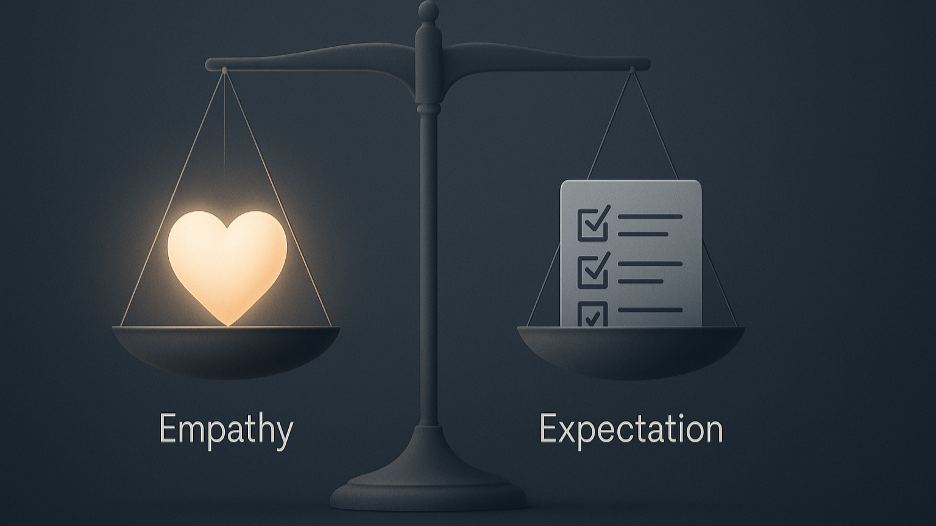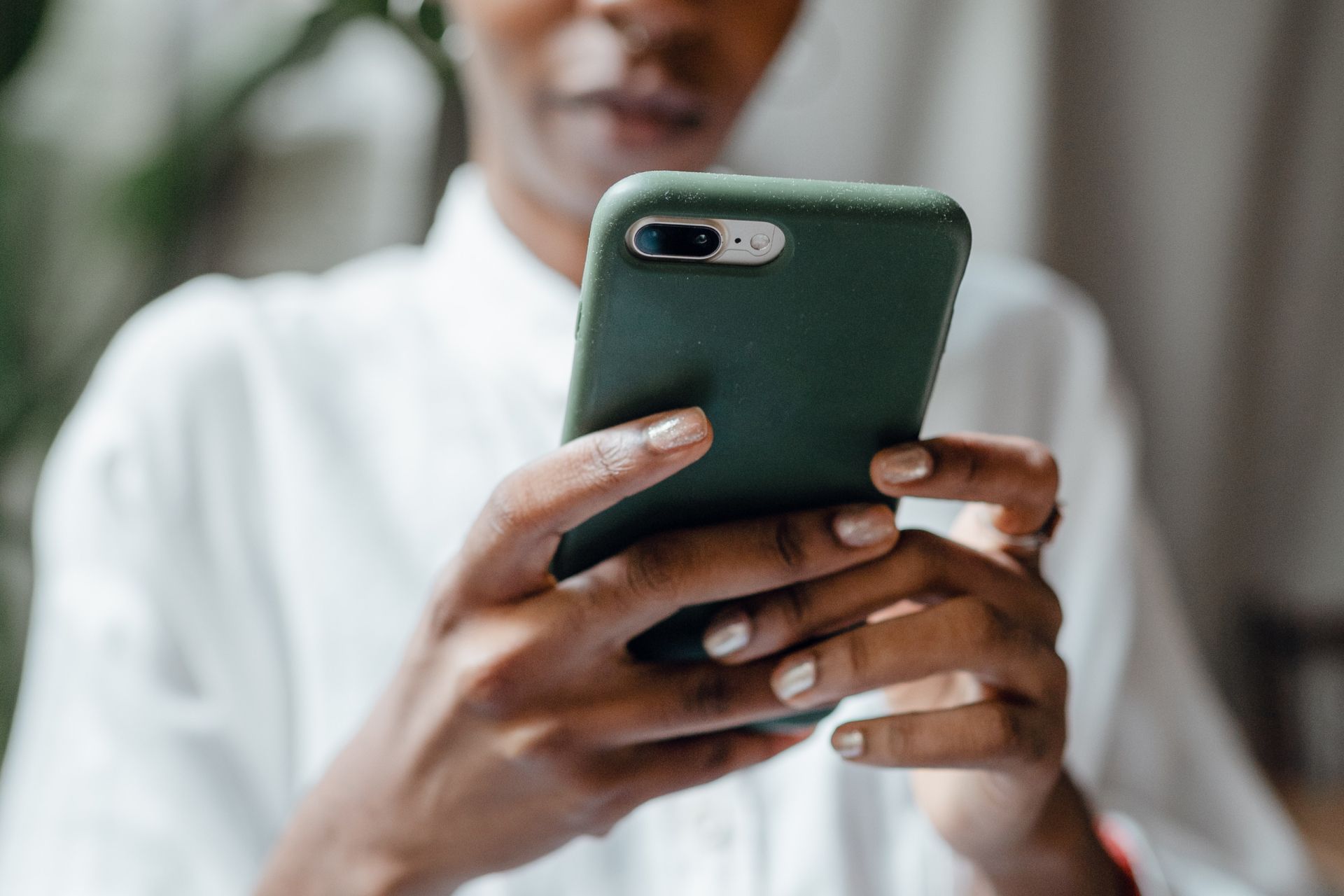Article
Virtual Chaos: How to Stop Dysfunctional Behavior in Remote Meetings
September 6, 2024
Don’t Let Dysfunction Destroy Your Remote Meetings

Welcome to the New Battlefield—Your Remote Meeting
Your team may be scattered across different time zones, sitting in their home offices, but the battleground for productivity remains the same: your virtual meeting room. Unlike the physical office, where you can catch subtle cues and pull someone aside for a quick chat, remote meetings come with their own set of unique challenges. And when dysfunction strikes in this digital environment, the impact is amplified. If you’re noticing more tension, disengagement, or outright chaos in your remote meetings, it’s time to take action—before your team’s potential is completely derailed.
The Hidden Dangers of Disconnection—Why Remote Teams Struggle Remote work has its perks—flexibility, no commute, the comfort of home—but it also comes with significant risks, particularly when it comes to team cohesion. When team members are miles apart, the sense of connection that naturally forms in an office can quickly deteriorate. This disconnection doesn’t just make meetings awkward; it lays the groundwork for dysfunctional behavior.
In remote meetings, the lack of physical presence makes it easier for participants to disengage, misunderstand each other, or hide behind technology to avoid confrontation. Miscommunication becomes rampant, and small issues that could have been resolved with a quick in-person conversation snowball into major conflicts. Before you know it, your meetings have devolved into unproductive sessions where dysfunction is the norm.
Dysfunction in the Digital Age—The New Rules of Engagement The first step in combating dysfunctional behavior in remote meetings is to establish clear rules of engagement tailored to the virtual environment. Traditional meeting norms don’t always translate well to video calls, where technical issues, time delays, and the lack of non-verbal cues can lead to frustration and confusion.
The Digital Disruptors—Common Dysfunctional Behaviors in Remote Meetings Dysfunctional behaviors that were once subtle in in-person meetings can become glaringly obvious in a remote setting. Here’s how to identify and address them:
Bringing Focus Back—How to Refocus a Derailing Remote Meeting Even with the best-laid plans, remote meetings can sometimes go off the rails. Here’s how to get things back on track:
The Long-Term Fix—Building a Culture of Accountability in Remote Teams Stopping dysfunctional behavior in remote meetings isn’t just about quick fixes; it requires building a culture of accountability and engagement over the long term. Here’s how:
Conclusion: Don’t Let Dysfunction Destroy Your Remote Meetings Remote work is here to stay, and with it, the challenges of running effective virtual meetings. Dysfunctional behavior in these settings can quickly derail productivity, undermine team cohesion, and lead to frustration all around. But by setting clear expectations, fostering active participation, and addressing issues head-on, you can stop dysfunction before it takes hold.
Remember, your remote meetings are a reflection of your team’s overall health. By taking steps to ensure they run smoothly, you’re not just preventing dysfunction—you’re setting your team up for long-term success in a digital world.
Don’t let virtual chaos take over; take control of your meetings and watch your team thrive.
The Hidden Dangers of Disconnection—Why Remote Teams Struggle Remote work has its perks—flexibility, no commute, the comfort of home—but it also comes with significant risks, particularly when it comes to team cohesion. When team members are miles apart, the sense of connection that naturally forms in an office can quickly deteriorate. This disconnection doesn’t just make meetings awkward; it lays the groundwork for dysfunctional behavior.
In remote meetings, the lack of physical presence makes it easier for participants to disengage, misunderstand each other, or hide behind technology to avoid confrontation. Miscommunication becomes rampant, and small issues that could have been resolved with a quick in-person conversation snowball into major conflicts. Before you know it, your meetings have devolved into unproductive sessions where dysfunction is the norm.
Dysfunction in the Digital Age—The New Rules of Engagement The first step in combating dysfunctional behavior in remote meetings is to establish clear rules of engagement tailored to the virtual environment. Traditional meeting norms don’t always translate well to video calls, where technical issues, time delays, and the lack of non-verbal cues can lead to frustration and confusion.
- Set Clear Expectations: Remote meetings require even more structure than in-person ones. Distribute a detailed agenda in advance, and make sure everyone knows what’s expected of them. Clarify who should speak and when, and establish norms for muting microphones, using the chat function, and sharing screens.
- Cameras On, Distractions Off: In a virtual setting, it’s easy to hide behind a turned-off camera and multitask. To foster accountability and engagement, make it a rule that cameras should be on unless there’s a good reason otherwise. This helps recreate some of the social pressure of an in-person meeting, making it harder for participants to tune out.
- Facilitate Active Participation: Without the natural flow of in-person conversation, it’s easy for remote meetings to be dominated by one or two voices. Use features like the “raise hand” button, or go around the virtual room to ensure everyone has a chance to contribute. Encourage quieter members to speak up and actively manage any over-talking.
The Digital Disruptors—Common Dysfunctional Behaviors in Remote Meetings Dysfunctional behaviors that were once subtle in in-person meetings can become glaringly obvious in a remote setting. Here’s how to identify and address them:
- The Invisible Participant: This is the person who shows up to the meeting but contributes nothing. They might be dealing with distractions, or they might simply be disengaged. To counter this, directly ask for their input or assign specific roles or tasks during the meeting. This encourages them to stay engaged and participate actively.
- The Over-Talker: In remote meetings, some people may feel the need to dominate the conversation, perhaps to compensate for the lack of physical presence. This can stifle others and lead to frustration. To manage this, set time limits for individual contributions, and rotate speaking opportunities to ensure balanced participation.
- The Technical Blamer: Some participants might frequently blame technical issues—like a bad connection or audio problems—for their lack of engagement. While technical difficulties are real, they can also become a convenient excuse for disengagement. Encourage participants to test their equipment before meetings and have a backup plan in place, like dial-in options, to mitigate these issues.
- The Side-Chatter: Private chats during a meeting can create silos and exclude others from important conversations. To prevent this, set a rule that all relevant discussions should happen in the main chat or aloud. This keeps the conversation transparent and inclusive.
Bringing Focus Back—How to Refocus a Derailing Remote Meeting Even with the best-laid plans, remote meetings can sometimes go off the rails. Here’s how to get things back on track:
- Refocus the Agenda: If the conversation strays off-topic, gently steer it back to the agenda. You can say something like, “This is an important point, but let’s park it for now and come back to it if we have time at the end.”
- Address Conflict Directly: If tensions are rising or disagreements are becoming personal, don’t ignore it. Address the conflict head-on by acknowledging the differing opinions and suggesting a way forward. For example, you might say, “It seems like we have different perspectives on this. Let’s take a moment to hear both sides and then decide how to proceed.”
- Use Breakout Rooms: If the meeting is too large or the discussion is getting unwieldy, use breakout rooms to divide participants into smaller groups. This can make the conversation more manageable and give everyone a chance to speak.
The Long-Term Fix—Building a Culture of Accountability in Remote Teams Stopping dysfunctional behavior in remote meetings isn’t just about quick fixes; it requires building a culture of accountability and engagement over the long term. Here’s how:
- Regular Check-Ins: Schedule regular one-on-one check-ins with team members to address any concerns or frustrations before they spill over into meetings. These conversations can help you identify and address issues early.
- Feedback Loops: Create a culture where feedback is both given and received regularly. After meetings, solicit feedback on what went well and what could be improved. Use this input to adjust your approach to future meetings.
- Celebrate Successes: Don’t forget to acknowledge and celebrate when things go right. Whether it’s a successful meeting or a particularly productive discussion, recognizing these moments can reinforce positive behavior and encourage more of the same.
Conclusion: Don’t Let Dysfunction Destroy Your Remote Meetings Remote work is here to stay, and with it, the challenges of running effective virtual meetings. Dysfunctional behavior in these settings can quickly derail productivity, undermine team cohesion, and lead to frustration all around. But by setting clear expectations, fostering active participation, and addressing issues head-on, you can stop dysfunction before it takes hold.
Remember, your remote meetings are a reflection of your team’s overall health. By taking steps to ensure they run smoothly, you’re not just preventing dysfunction—you’re setting your team up for long-term success in a digital world.
Don’t let virtual chaos take over; take control of your meetings and watch your team thrive.
share this
Related Articles
Related Articles

The Nicest Boss in the World He was adored. He remembered birthdays, checked in on people’s families, and stayed late helping fix slides no one asked him to touch. His team called him “the best boss we’ve ever had.” He was also running on fumes. Behind the warm smile was a leader quietly burning out — drowning in everyone else’s problems, too empathetic for his own good. If you’re a leader who prides yourself on caring deeply, this might sting a little: empathy, taken too far, becomes control in disguise. Empathy’s Secret Shadow Empathy is essential for leadership. It builds loyalty, safety, and trust. But the same trait that makes people feel seen can also make them dependent. When you can’t tolerate someone else’s discomfort, you start protecting them from it. You step in to fix, to soothe, to rescue. It looks noble. It feels generous. But it quietly steals agency — theirs and yours. Your team stops growing because you’re doing their emotional labor. You stop leading because you’re managing feelings instead of outcomes. That’s the hidden cost of care. The Emotional Guilt Loop Over-empathetic leaders live in a constant tug-of-war between compassion and guilt. They think: “They’re already stretched — I can’t pile more on.” “If I push harder, I’ll seem uncaring.” “I’ll just do it myself; it’s easier.” Sound familiar? That’s not empathy anymore. That’s guilt masquerading as kindness. And guilt makes terrible business decisions. Because guilt doesn’t guide you toward what’s right. It just steers you away from what feels uncomfortable. A Founder’s Story One founder I coached, let’s call her Lina, led with heart. She built her company around “people first.” And she meant it. But somewhere along the way, “people first” turned into “me last.” She couldn’t say no. She kept saving underperformers, approving vacations during crunch time, rewriting others’ work to spare them stress. Her team adored her — until they didn’t. Because beneath her helpfulness was quiet resentment. And resentment always leaks. The breakthrough came when she realized something simple but hard: “I was protecting people from learning the hard parts of growth.” That’s when she started leading again instead of parenting. When Caring Becomes Control Here’s the paradox: the more you care, the more you risk over-controlling. You jump in to fix not because you don’t trust them, but because you feel for them. It’s empathy turned inward — I can’t stand watching them struggle. But leadership isn’t about eliminating discomfort. It’s about using it wisely. People grow by stretching, not by being spared. When you save someone from every failure, you’re also saving them from competence. The Biology of Burnout Chronic empathy triggers chronic stress. When you absorb other people’s emotions all day, your nervous system never gets a break. You start mirroring everyone’s anxiety like an emotional amplifier. Your brain thinks you’re in crisis — even when you’re not. That’s why over-caring leaders are often the first to burn out. Their compassion becomes constant cortisol. The irony? The leaders who want to create safety for others end up unsafe themselves. How to Care Without Carrying Feel, then filter. It’s okay to feel someone’s frustration. Just don’t keep it. Ask: “Is this mine to hold?” Help through accountability. Say, “I know this is tough, and I also need you to take ownership.” The and matters. Let discomfort be developmental. When a team member struggles, resist rescuing. Stay present, not protective. Coach before you comfort. Instead of “Don’t worry,” try, “What do you think your next move is?” Reframe empathy as empowerment. Caring isn’t about absorbing pain; it’s about believing people can handle it. Funny but True One exec I worked with told me, “Every time I stop helping, I feel like a jerk.” I said, “No — you feel like a leader. It just takes a while to tell the difference.” He laughed and said, “So… you’re telling me leadership feels bad at first?” I said, “Exactly. Growth always does.” The Cultural Ripple Effect When leaders overfunction, teams underfunction. When leaders hold space instead of taking space, teams rise. Empathy should expand others, not consume you. The healthiest cultures balance care and candor — support and stretch. They normalize struggle as part of the process instead of something to be hidden or rescued. That’s what real compassion looks like in motion. The Maturity of Tough Empathy Empathy without boundaries is exhaustion. Empathy with boundaries is wisdom. The mature version of empathy doesn’t say, “I’ll protect you.” It says, “I believe you can handle this — and I’ll walk beside you while you do.” That’s not cold. That’s developmental. Your Challenge This Week Notice where you’re rescuing someone instead of coaching them. Pause before you step in. Ask yourself, Am I helping because they need it — or because I need to feel helpful? Then take one small risk: let them handle it. They’ll probably surprise you. And you’ll feel lighter than you have in months. Final Word Caring is beautiful. It’s what makes you human. But unchecked empathy turns leaders into emotional pack mules — carrying what was never theirs to bear. Real leadership is still full of heart. It just remembers that compassion without accountability isn’t love. It’s fear. And the moment you stop rescuing everyone, you finally start freeing them — and yourself.s)

The Smart Leader’s Blind Spot It’s strange how often the smartest people make the worst decisions under pressure. They don’t lose IQ. They lose perspective. I’ve seen this happen more times than I can count. A sharp, decisive executive starts second-guessing every move. They overanalyze, overwork, and overcontrol — all in the name of being “thorough.” They think they’re being rational. But underneath the spreadsheets and meetings is something far less logical. It’s fear. The Fear That Doesn’t Look Like Fear We think of fear as panic — sweating, shaking, obvious. But most leadership fear hides behind competence. It shows up as perfectionism, busyness, overcommitment, indecision. It sounds like, “Let’s get more data.” “Let’s not rush this.” “Let’s keep this one close.” That’s not analysis. That’s avoidance with a better vocabulary. When fear runs the show, the goal subtly shifts from making the right decision to avoiding the wrong one. And those two things are worlds apart. The Cost of Fear-Based Leadership When leaders operate from fear, everything tightens. They stop listening. They rush to defend. They play small when the company needs boldness. They keep people who are loyal over people who are competent — because loyalty feels safer. And here’s the real tragedy: the team starts copying the fear. They become cautious, compliant, quiet. Pretty soon, no one’s leading anymore. They’re all managing risk — mostly emotional risk. A CEO’s Moment of Truth One CEO I coached — brilliant, confident, deeply human — was terrified of being wrong in front of his board. He masked it well. On the outside: decisive. Inside: a constant hum of anxiety. After a tough quarter, he admitted, “I realized half my decisions weren’t based on strategy — they were based on protecting my image.” That moment of honesty was the start of his maturity curve. Once he could name the fear, it stopped running his show. He didn’t become fearless. He became aware. And awareness is what turns reaction into wisdom. Why Fear Feels Safer Than Clarity Fear has a strange way of convincing us it’s caution. Caution whispers, “Slow down and look.” Fear screams, “Don’t move.” The first sharpens judgment. The second paralyzes it. And the more we listen to fear, the more it disguises itself as prudence. That’s why emotional maturity isn’t about suppressing fear. It’s about being able to say, “Ah, that’s fear talking — not fact.” How Fear Distorts the Mind Here’s what happens when fear hijacks leadership: Tunnel vision: You fixate on the immediate threat and forget the big picture. Confirmation bias: You start looking for data that validates your anxiety. Short-termism: You make safe decisions that feel good now and cause pain later. Blame shifting: You protect your ego by pushing ownership outward. The mind gets smaller. The leader gets reactive. The company gets stuck. The Maturity Shift Emotional maturity isn’t about being unshakable. It’s about staying curious in the presence of fear. Mature leaders don’t pretend they’re fearless. They just don’t let fear make the decisions. They pause, breathe, and ask, “What part of this is data, and what part is my insecurity talking?” That single question can change everything. A Founder’s Story A founder I worked with once said, “I’m not afraid — I just have high standards.” But as we unpacked it, he realized those “high standards” were actually a way to control outcomes. He feared disappointment — his own and others’. When he finally stopped trying to protect his reputation and started protecting his clarity, his decisions got faster and cleaner. The business didn’t just grow — it started breathing again. Because when you stop trying to look right, you finally have room to be right. Funny, But True I once asked a CEO what he’d do differently if he weren’t afraid of failing. He said, “Probably the same things I’m doing now — just with less Advil.” That’s the thing: most leaders already know what to do. Fear just makes it hurt more. How to Lead Without Fear (Even When It’s There) Name it early. The sooner you recognize fear, the less power it has. Ask yourself, “What’s the story fear’s telling me right now?” Reframe mistakes as tuition. You’ll still pay for errors — might as well learn something from them. Separate identity from outcome. A bad decision doesn’t mean a bad leader. It means a leader who’s still learning — like everyone else. Keep one truth-teller nearby. Someone who loves you enough to tell you when you’re acting from ego. Practice micro-bravery. Tell one hard truth a day. Say “I don’t know” once a week. Let discomfort become strength training. The Paradox of Fear Fear doesn’t make you weak. It means you care. But if you never face it, it becomes your compass — and it always points backward. Courage, maturity, clarity — they’re not opposites of fear. They’re what happen when you stop running from it. Your Challenge This Week Next time you feel that knot in your stomach — before a board meeting, a tough conversation, a high-stakes call — pause. Ask yourself: What am I afraid might happen? Then ask: What might happen if I act from clarity instead of fear? That’s not therapy. That’s leadership hygiene. Final Word The mark of maturity isn’t fearlessness. It’s self-awareness. You can’t control your fear. But you can choose whether it sits in the driver’s seat or the passenger’s. Great leaders don’t wait for fear to disappear. They lead with it beside them — quietly, respectfully — but never in charge.

The Charisma Illusion Charisma gets all the press. It fills conference rooms, wins funding rounds, and dominates the LinkedIn highlight reel. We treat it like the gold standard of leadership — as if volume equals vision. But charisma is a sugar high. It spikes energy, then crashes trust. Composure, on the other hand — quiet, grounded, centered composure — is the kind of influence that lasts. It doesn’t light up a room; it settles one. When things go sideways, it’s not the charismatic leader people look for. It’s the calm one. The Crisis Test Picture this. The product just failed. The client’s furious. Your team’s pacing like trapped cats. Two leaders walk in. One storms into action — loud, fast, “What the hell happened here?” The other walks in slowly, looks around, and says, “Okay, let’s breathe. What do we know so far?” The first one gets attention. The second one gets results. That’s emotional geometry — the calmest person in the room reshapes everyone else’s state. Why Calm Is the Real Power When you stay composed, you’re not just managing your emotions — you’re regulating the entire system. Here’s the neuroscience behind it: people mirror the nervous system of whoever has the most authority. If you’re grounded, they sync to your rhythm. If you’re frantic, they sync to that instead. You don’t need to lecture anyone on resilience. You just have to model it. It’s not charisma that makes people trust you; it’s the quiet sense that you’re not going to lose your mind when things get hard. Charisma’s Half-Life Charisma is a spark. It can ignite a team — but if there’s no composure beneath it, the whole thing burns out. You’ve seen this movie before: the leader who rallies everyone with a passionate all-hands speech, then disappears into reaction mode when things get messy. Charisma without composure is like caffeine without sleep. You’re awake, but you’re not steady. Composure doesn’t get the applause. It gets the loyalty. A Founder’s Story One founder I worked with — I’ll call him David — was known for being a “high-voltage” guy. He could pitch an investor, fire up a crowd, or talk anyone into anything. But his team? They were walking on eggshells. His energy filled every room, but it left no oxygen for anyone else. During one session, I asked, “When you raise your voice, what happens to theirs?” He went quiet. That was the moment he understood that his passion — the thing he was most proud of — had become the team’s anxiety. A year later, his team described him differently: “He’s still intense, but steady. We trust him more now.” He didn’t lose charisma; he layered it with composure. The Calm Before the Influence Here’s what composure actually looks like: You listen longer. Because real influence starts with attention, not argument. You breathe before reacting. That pause isn’t weakness; it’s power management. You let silence do the work. Charisma fills every space; composure creates space for others to step in. You own your tone. You realize your sighs, your speed, your face — they’re all communication tools whether you intend them or not. You choose steadiness over certainty. People don’t need you to know everything. They just need to know you’re okay not knowing. Funny But True A client once told me, “When I’m calm in a meeting, people assume I’m hiding something.” I said, “Good. Let them wonder.” That’s how unfamiliar calm has become. In some cultures, composure looks radical — even suspicious. But it’s exactly what people crave in a world that never shuts up. Why Charisma Is Easier (and More Addictive) Charisma gets feedback. You see the energy rise, you feel the applause. It’s visible. Composure feels invisible — until you lose it. No one thanks you for staying calm during a crisis. But they remember it when deciding whether to follow you into the next one. That’s why maturity in leadership means getting comfortable with the quiet wins — the meeting that didn’t spiral, the argument that didn’t happen, the team that stayed focused because you did. The Emotional Geometry in Practice Think of composure as geometry because emotions move through space. When you enter a room, you alter its emotional shape. If you radiate calm, people’s shoulders drop. Their thinking widens. They start contributing. If you radiate stress, the room contracts. People shrink. Ideas vanish. Influence isn’t what you say. It’s the energy field you create. Your Challenge This Week Before your next high-stakes meeting, pause outside the door. Take one deep breath and ask yourself: What energy does this room need from me right now? Then bring only that. Nothing more. You’ll be amazed how fast everything slows down when you do. Final Word Charisma captures attention. Composure builds trust. One is about how loudly you shine; the other is about how steadily you glow. The leader who can stay centered when everyone else is spinning doesn’t just have influence — they are the influence. And that’s the kind of power that never burns out.
STAY UP TO DATE
GET PATH'S LATEST
Receive bi-weekly updates from the church, and get a heads up on upcoming events.
Contact Us








